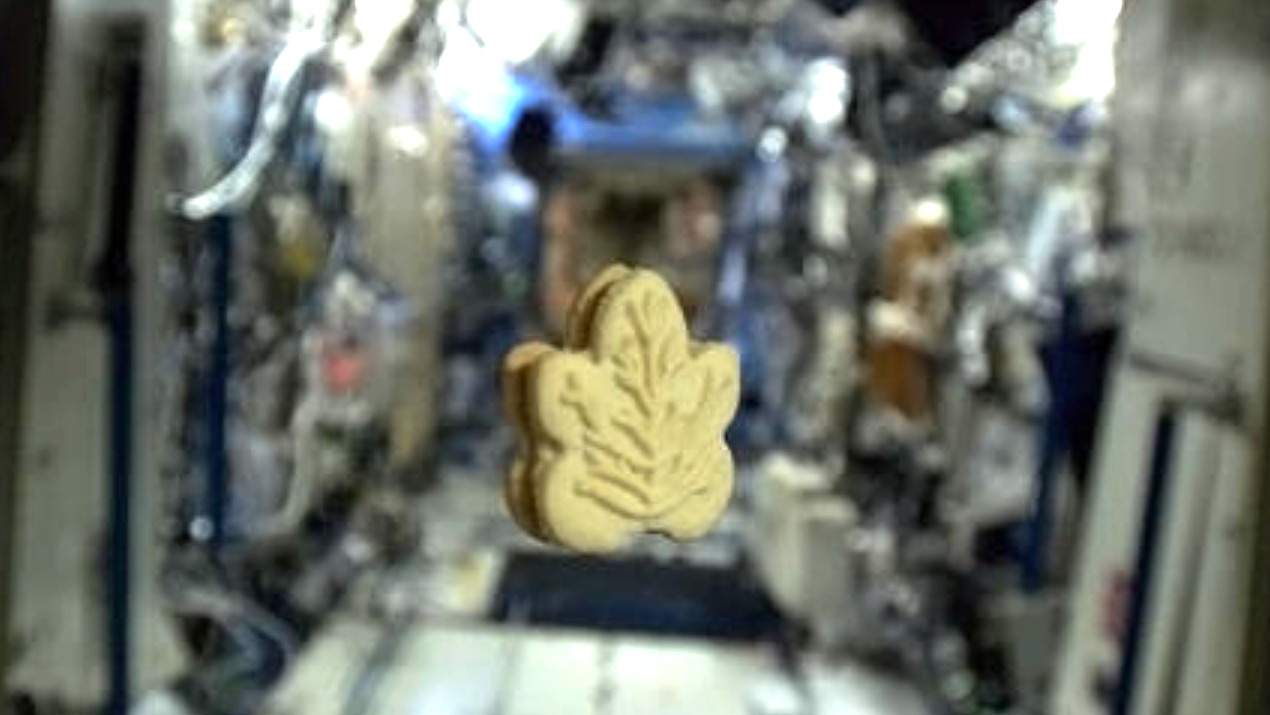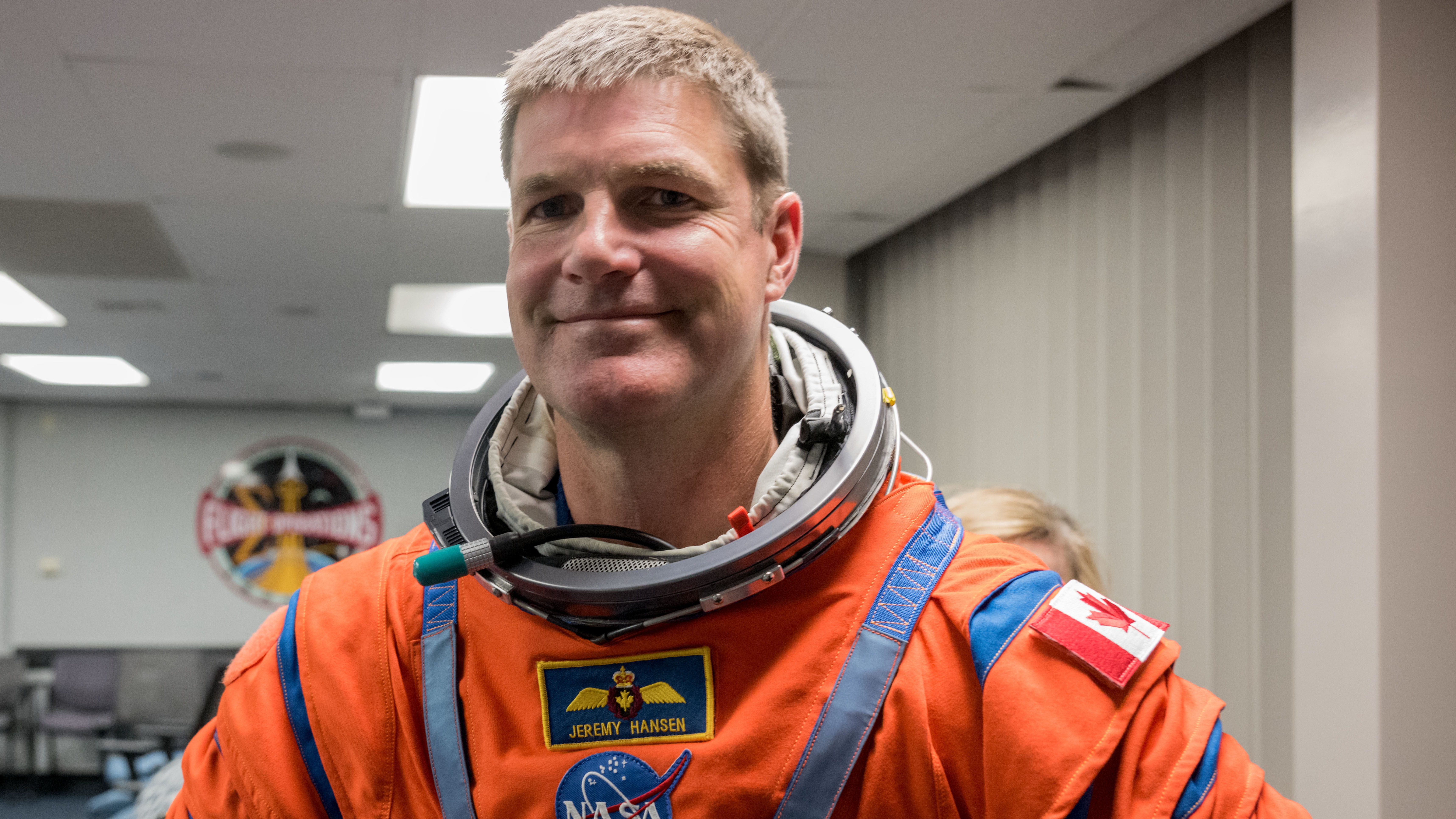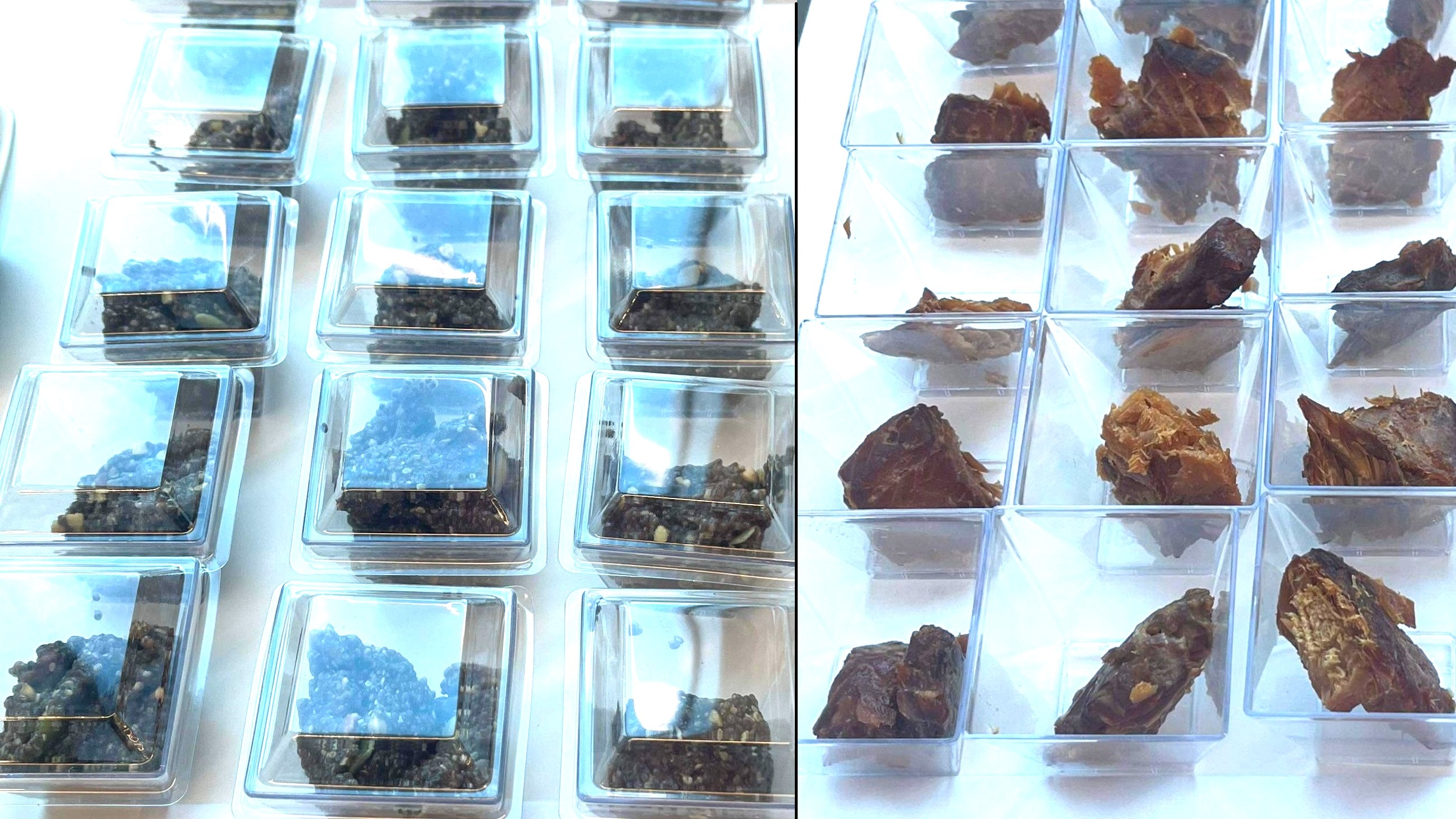Artemis 2 moon astronauts will enjoy maple cream cookies and smoked salmon thanks to Canada
Yes, maple cream cookies are among the menu items.

MONTREAL, CANADA — Canadian cereal, curry and maple cream cookies are all flying to the moon.
The Canadian Space Agency (CSA) recently revealed the food that will be flying on board Artemis 2, the first human moon mission in 53 years, when it lifts off in September 2025 or so (following a recent nine-month delay due to technical problems.)
Table manners in space are different than Earth: you need to control your crumbs. Canadian astronaut Jeremy Hansen assured reporters here at CSA headquarters, however, that not all eating norms are ignored. He doesn't plan on shoving an entire cookie in his mouth for the sake of cleanliness, for example.
"Nah, it's just common sense. You control your portions," Hansen said Feb. 5 as the reporters laughed.
Related: Astronauts won't walk on the moon until 2026 after NASA delays next 2 Artemis missions
Hansen, the first non-American to fly to the moon, will be joined with NASA commander Reid Wiseman, NASA pilot Victor Glover (the first Black person to leave low Earth orbit, or LEO) and NASA mission specialist Christina Koch (the first woman).
The quartet will be using some menu traditions from the International Space Station (ISS) in building out their menu. While their small Orion spacecraft lacks a substantial galley, there will be a standard set of food on board with adjustments for crew members' taste or cultural preferences. Hence, the Canadian maple leaf cream cookies, which have flown on several ISS missions already
Get the Space.com Newsletter
Breaking space news, the latest updates on rocket launches, skywatching events and more!

In picking the foods for space, the CSA considered factors such as "shelf life, texture, packaging, ingredients, feasibility to prepare and ease of consumption in space," officials told Space.com in an e-mailed statement.
Astronauts typically have three meals and one snack a day, with food amounts ranging between 1,900 and 3,200 calories daily depending on weight, gender and other specific needs.
The astronauts and other food evaluators were also asked about "organoleptic properties," or sensations such as appearance, aroma, flavor and texture. From these discussions, the following products were selected:

Maple cream cookies: Enriched wheat flour, sugars (icing sugar, sugar, glucose-fructose, maple syrup), shortening (palm oil, canola oil, modified palm oil), salt, natural & artificial flavor, sodium bicarbonate, soy lecithin, ammonium bicarbonate.
Maple syrup.
Smoked salmon: Wild pacific chum salmon, cane sugar, sea salt, natural hardwood smoke.
Shrimp curry with rice: Rice, curry sauce, coconut milk powder (dried coconut milk, tapioca maltodextrin, sodium caseinate), skim milk powder, wheat flour, corn starch and modified corn starch, modified milk ingredients, glucose solids, dextrose, spices, yeast extract, dehydrated vegetables (onion, garlic), hydrolyzed soy protein, salt, parsley chicken fat, roasted cashews (cashews, canola oil), freeze dried shrimp, raisins.
Strawberry lavender superseed cereal: Chia seeds, pumpkin seeds, hemp seeds, organic buckwheat, strawberry fragments, strawberry powder, organic pure stevia leaf powder, organic lavender flowers.
Canada is a part of the NASA-led Artemis Accords that establish peaceful norms of space exploration. More than 30 countries have signed on to the accords; Canada, certain members of the European Space Agency and a few other countries are supplying hardware for the Artemis program's moon aims that allow for direct participation. Canada's hardware is the Canadarm3 robotic arm for the future NASA Gateway space station.
An image caption was corrected on Feb. 26 to reflect the correct label.
Join our Space Forums to keep talking space on the latest missions, night sky and more! And if you have a news tip, correction or comment, let us know at: community@space.com.

Elizabeth Howell (she/her), Ph.D., was a staff writer in the spaceflight channel between 2022 and 2024 specializing in Canadian space news. She was contributing writer for Space.com for 10 years from 2012 to 2024. Elizabeth's reporting includes multiple exclusives with the White House, leading world coverage about a lost-and-found space tomato on the International Space Station, witnessing five human spaceflight launches on two continents, flying parabolic, working inside a spacesuit, and participating in a simulated Mars mission. Her latest book, "Why Am I Taller?" (ECW Press, 2022) is co-written with astronaut Dave Williams.









